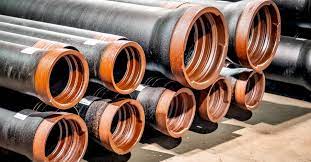Sewer pipe repair is often a messy and expensive process. However, new technologies can offer less destructive alternatives to digging up your yard and replacing damaged pipes.
One option is the cured-in-place pipe (CIPP) lining. This trenchless method uses existing access points to create a pipe-within-a-pipe, resulting in durable repairs.
Prevent Root Growth
Tree and shrub roots are among the most common causes of clogged or blocked sewer lines. These roots penetrate even the most minor cracks in your sewer line pipes in search of water, oxygen, and nutrients. If they sense a leak in your sewage pipe, they quickly grow into it and inhibit the flow of waste. This can lead to sluggish drains, gurgling toilets, and other serious problems that require costly plumbing repairs.
Planting trees and shrubs far away from your sewer line pipes is an excellent idea to keep root invasions in check. If you already have them, ensure their roots don’t reach the pipes by burying a barrier of rocks or metal near them. You can also use chemicals that stop root growth. Some of these include rock salt and foaming root killer, which are known to dry out the roots and kill them.
However, investing in regular maintenance and inspections is the best way to prevent future problems with your sewer lines. A professional plumber can spot any problems with your sewer line, such as cracks or blockages, and repair them before they cause significant damage. The inspection process includes using a high-definition camera to examine the entire length of the pipe. After that, the plumbing contractor will clean the sewer pipes using hydro-jetting to remove any clogs, debris, and scale buildup. Then, they will install a cured-in-place pipe (CIPP) that acts as a new pipe inside the old one.
Prevent Leaks
Over time, the pipes in your home’s sewer system will deteriorate, leading to cracks and leaks. If these cracks aren’t repaired, sewage can back into your property and cause severe damage to your home or business. While the old way of repairing damaged sewer lines involved digging up and replacing the pipes, trenchless technology has revolutionized these repairs.
One such method is sewer pipe lining, which involves installing a liner inside the existing pipes. The liner prevents future blockages and protects the pipe from tree roots.
Pipe liners are often made of durable plastic or a composite material that can resist future corrosion. They are sprayed on the inside of the existing pipes and then inflated so that they press against the sides of the existing pipes. The liners can also be exposed to heat or UV radiation to cure or harden them in place.
Before the lining process begins, a technician will clean the interior of your sewer line with mechanical tools. They will also set up a temporary drain bypass system if necessary. You must limit the water you use in your home during this time, including showers and washing machines. It’s essential to do this to prevent water from filling up your private sewer line and backing up into your house during the lining process.
Prevent Damage to Your Property
A damaged sewer pipe can be more than just an inconvenience for homeowners. If the issue is not dealt with quickly, it can cause extensive damage to your property, leading to costly repairs. For instance, if sewage backs up into your home, it can destroy your flooring and even demolish your walls.
The good news is that you can avoid this expensive and stressful repair by getting your pipes relined as soon as you notice any signs of damage. Pipelining is a minimally-invasive procedure that uses epoxy resin to line your existing pipes and restore them to like-new condition. There are four different types of pipelining:
Cured-in-place pipe lining (CIPP) involves inserting an epoxy-impregnated flexible liner into your damaged pipe and inflating it. Then, the liner is cured using heat or UV light. CIPP lines are highly durable and can last up to 50 years.
Pull-in-place pipe lining — this method is similar to CIPP but is more effective at covering significant gaps and cracks. It also requires two access points to install the liner.
Traditional sewer line repair methods require technicians to dig up your yard and replace the damaged or broken pipes. This is an expensive and time-consuming process. By choosing a trenchless repair option, you can save money and avoid the hassle of digging up your yard.
Prevent Water Damage
When a sewer pipe cracks or breaks, it can leak wastewater into the surrounding soil. This corrosive waste can seep into your home and cause severe damage, flooding, and mould growth. By relining your pipes, you can avoid costly repairs and protect the integrity of your home.
Proper sewer pipe relining procedures are also environmentally friendly. These trenchless processes prevent damage to garden beds, walkways, driveways, and other landscape features. In addition, the epoxy resin used to seal the cracks and breaks in your sewer lines can help prevent dangerous chemicals from leaking into your drinking water.

